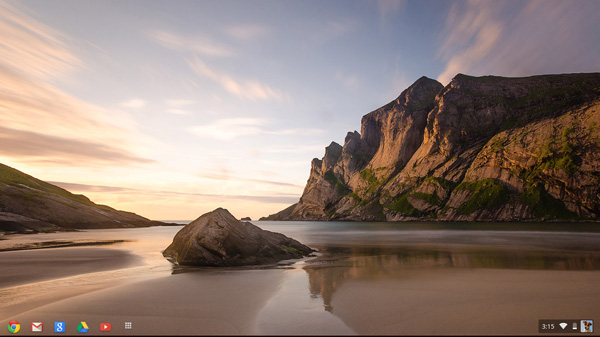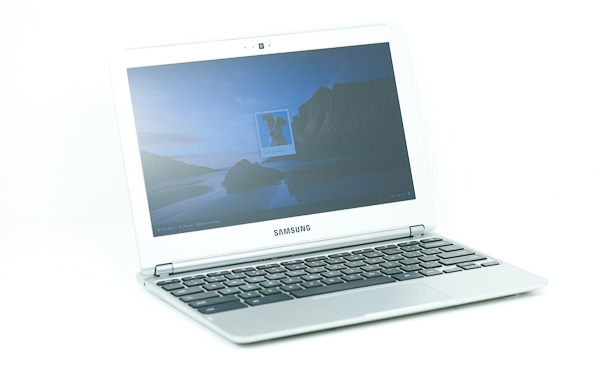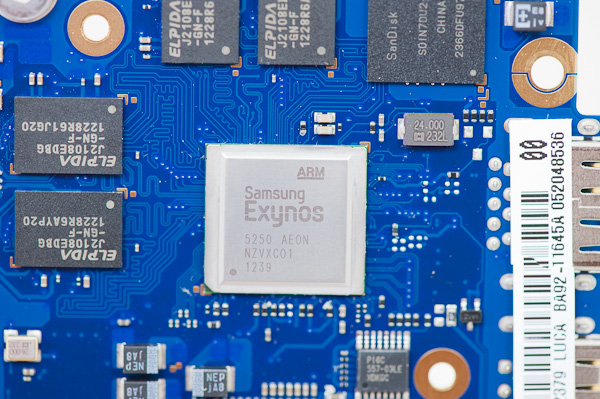Samsung Chromebook (XE303) Review: Testing ARM's Cortex A15
by Anand Lal Shimpi on October 31, 2012 9:00 AM ESTGoogle announced the Chrome OS project two years ago, and with it came the first Chromebook: the CR-48. The Chrome OS concept seemed revolutionary at the time. In 2010 we were well into the latest round of questioning whether today's PCs were fast enough. The Ultrabook revolution hadn't yet begun, and the iPad was starting to gain momentum. Capitalizing on the market being flooded with poor quality, yet affordable PC notebooks that still struggled with the same virus/malware issues they'd been facing for years, Google took the opportunity to attempt to revolutionize the PC OS.
Chrome OS was that attempt at a revolution. As an OS built around a web browser, Chrome OS offered many of the advantages that the Chrome browser itself brought to the table: sandboxing, guest mode and constant/painless updates. All user data is encrypted on the drive by default. Security was and remains a major feature of Chrome OS.
Google's revolution extended to hardware as well. The Cr-48 notebook delivered a good keyboard, trackpad and solid state storage. Future Chromebooks would do the same. While the price points of these machines (<$500) kept ultra high resolution IPS displays out of the bill of materials, Google promised good build quality and solid state storage - two things you couldn't find in cheap notebooks of the time.
Since then, some of the traditional PC makers have woken up. Although confined to the $999+ price point, we're finally seeing attention paid to build quality, display quality and storage performance. Over the next couple of years there's going to be increased focus on bringing those premium features down to sub $700 price points.
For Chrome OS and Google's Chromebooks to remain relevant, they also had to move down the pricing stack. With its most recent announcement, Google has done just that. The new Chromebook (Samsung XE303C12) is priced at $249, while maintaining much of what made its predecessors interesting.
Even more interesting than its aggressive price point is the choice of SoC inside Google's new Chromebook: Samsung's Exynos 5 Dual, featuring two ARM Cortex A15 CPU cores. This move makes the new Chromebook the very first non-x86 machine to ship with Chrome OS. Given that I also happen to have a dual-core Atom based Chromebook from 2011, the new Exynos 5 based machine gave me a unique opportunity to get a preview of how ARM's next-generation CPU core would stack up against Atom.













149 Comments
View All Comments
garfnodie - Thursday, November 15, 2012 - link
Let's see, Chromebook for $249, or Transformer w/ keyboard for $600. I'm guessing if you'r a broke college student who needs something simple, the Chromebook is looking pretty good.Myrandex - Wednesday, October 31, 2012 - link
Eh instead of the Nexus 10 + keyboard, Microsoft Surface all the way!Krysto - Thursday, November 1, 2012 - link
Why? I want a good high-res screen on my device if I'm going to $400, which is $100 cheaper and has the same amount of free storage as Surface.qwerty321 - Wednesday, March 20, 2013 - link
Not for long. When PNaCl is stabilised, ChromeOS users will be able to install native software. Obviously not Windows API stuff, but then who in their right mind would use that garbage anyway? There's a few things in the Chrome store experimenting with NaCl (the early, non-portable version) now.Midwayman - Wednesday, October 31, 2012 - link
I'm just a little shocked how how much the nexus 10 costs vs the chromebook. Clearly there is some price padding in the nexus 10 price.kllrnohj - Wednesday, October 31, 2012 - link
How do you figure? The two share a similar SoC, and nothing else. In particular the Nexus 10 has that incredibly gorgeous 2560x1600 IPS display, whereas this Chromebook has a mediocre, off the shelf 1366x768 TN display. Given that there's only a $150 difference between the two, the screen alone easily accounts for most of that. Similarly, the N10 is a smaller device - cramming the same stuff into a smaller form factor is typically harder and more expensive.Midwayman - Wednesday, October 31, 2012 - link
There aren't a lot of points of comparison with the Nexus 10 screen. Granted I'm sure the screen is more expensive, but similar size, similar SOC, same memory. Given the pricing trend with the nexus 7 and chromebook I expected a price around $50 less. Or at least to come with 32gb of memory for that price. I don't think $400 is a *bad* price, but it isn't as aggressive as I expected. I'm sure there will be a parts cost breakdown soon.Krysto - Wednesday, October 31, 2012 - link
Nexus 10 is a high-end tablet. Chromebook is a pretty low-end laptop, in all regards.sna19703 - Wednesday, October 31, 2012 - link
Get a Windows RT Tablet.kyuu - Thursday, November 1, 2012 - link
Once they release one with a better SoC than Tegra 3 and a 1600x900 screen or better, sure.